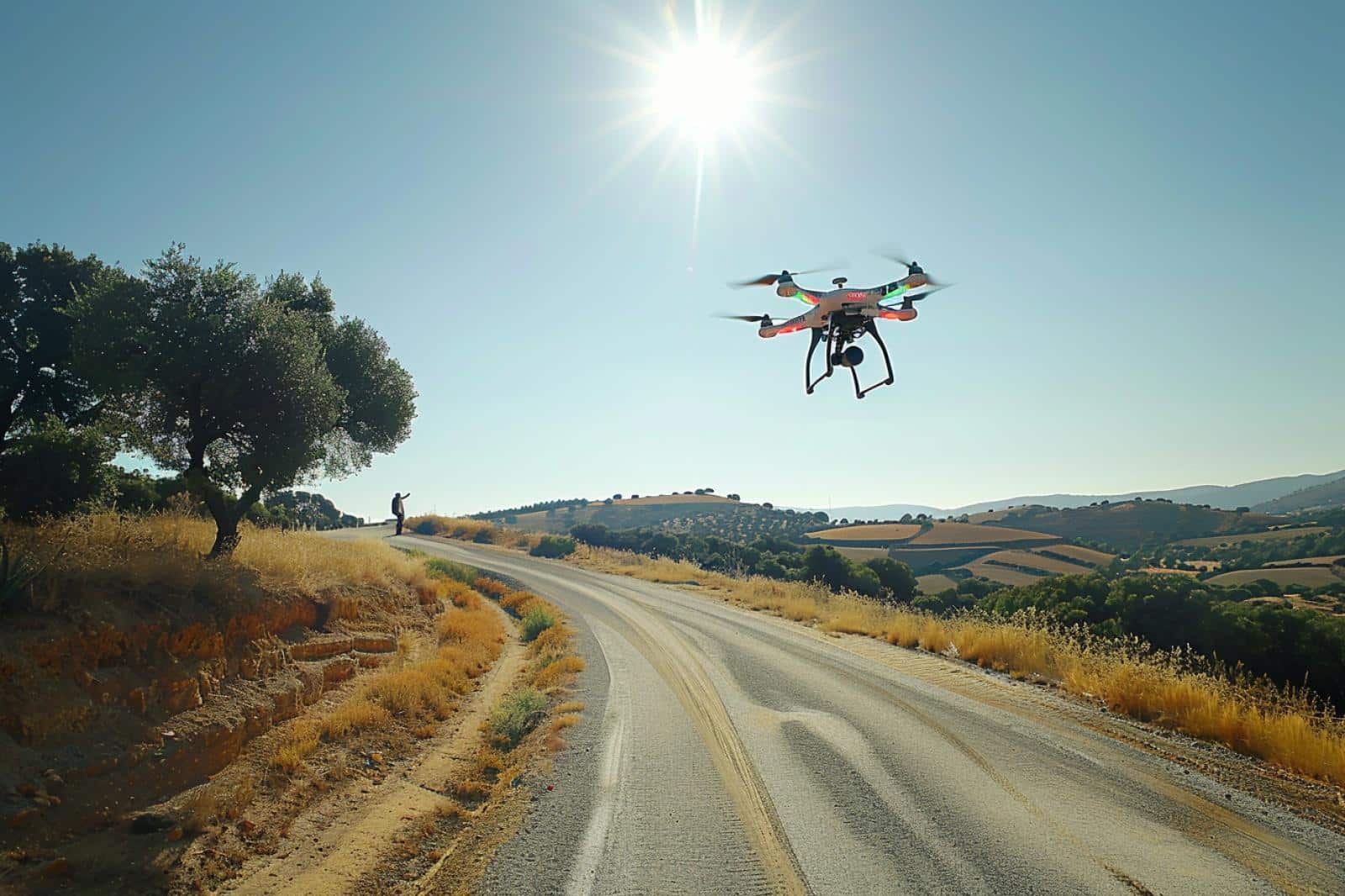How Are Personal Drones Being Used in Amateur Filmmaking?

In an era where technology has become an integral part of our daily lives, it is not surprising that it has penetrated into various fields such as filmmaking. One such groundbreaking technology that has drastically changed the landscape of amateur filmmaking is drones. These flying devices, also known as Unmanned Aerial Vehicles (UAVs), have been increasingly used by filmmakers to capture breathtaking aerial shots, provide a unique perspective, and add a professional touch to their creation.
The Advent of Drones in Filmmaking
Drones have come a long way since their initial use in the military. They are now predominantly used by people in various sectors, with filmmakers being one of the most significant beneficiaries of this technology. The game-changer in the drone industry came when DJI, a leading drone manufacturer, introduced drones equipped with high-quality cameras. This innovation enabled filmmakers to capture high-definition videos and photos from the air, providing a new dimension to films.
A lire en complément : What Are the Limitations of Current Drone Flight Range for Hobbyists?
In the past, capturing aerial shots required a helicopter, an expert pilot, and a professional cinematographer, which was not feasible for amateur filmmakers due to high costs and logistics. But drones have made aerial photography accessible and affordable, allowing amateur filmmakers to create visually stunning films.
Versatility and Range of Drones in Filmmaking
The drones’ flexibility, combined with their impressive flight and range capabilities, offer unparalleled possibilities in filmmaking. They can fly at various heights and in multiple directions, enabling filmmakers to capture unique perspectives and dramatic shots that were previously impossible or highly expensive with traditional methods.
Lire également : How Can Drones Enhance the Experience of Outdoor Adventures?
Drones like the DJI Phantom and Mavic series can fly up to a range of seven kilometers, providing a broad scope for capturing extensive landscape shots. They can also maintain a stable flight even in challenging weather conditions, ensuring the camera’s stability for perfect shots. The drones’ ability to hover at one position also enables filmmakers to capture stable and clear shots.
The Role of Drone Cameras in Filmmaking
The heart of a drone’s functionality in filmmaking is the camera. Drone cameras have consistently improved over time, now offering features such as 4K video resolution, image stabilization, and a wide range of shooting modes. This technology allows amateur filmmakers to produce professional-grade films without investing in high-end film cameras.
Drone cameras can capture stunning aerial shots, panoramic views, and even close-up shots with incredible detail. They also provide a dynamic range of angles and perspectives that can significantly enhance the storytelling aspect of a film. For instance, a sweeping aerial shot can establish a location, a fly-over can reveal important plot details, or a high angle shot can convey a character’s isolation or dominance.
Drone Technology Enhancing Amateur Filmmaking
Drone technology has become a crucial tool in the arsenal of amateur filmmakers. It has democratized filmmaking, making it possible for amateurs to produce films that were once only possible with a Hollywood-sized budget. With drones, filmmakers can capture sweeping shots of landscapes, track action sequences from the air, and even shoot in tight spaces where traditional cameras cannot reach.
Moreover, drones have also allowed filmmakers to explore their creativity. They can experiment with different shots, angles, and movements, leading to innovative and creative cinematography. It’s not just the freedom of movement; drones also offer features like pre-programmed flight paths and automatic subject tracking that allow filmmakers to focus more on the creative aspect of filming.
The Future of Drones in Amateur Filmmaking
Given the significant impact drones have had on amateur filmmaking, their future looks promising. As drone technology continues to evolve, we can expect drones to become more sophisticated and user-friendly. They may offer better camera quality, longer flight times, enhanced stability, and even more advanced features that make filming easier and more efficient.
Also, with the rise of virtual reality and 360-degree video technology, drones may play a crucial role in the production of immersive films. They could potentially offer a new storytelling medium, enabling filmmakers to create experiences that fully engage the audience.
In summary, drones have revolutionized amateur filmmaking, offering opportunities, versatility, and capabilities that were previously unthinkable. As technology continues to advance, it’s exciting to speculate how much further drones will push the boundaries of filmmaking.
Implication of Drone Pilots and Flight Time in Filmmaking
A critical aspect of drone operation in filmmaking is the role of the drone pilot. Their skill level can significantly influence the quality of the footage captured. Aspiring filmmakers using drones should invest time to understand the intricacies of flying a drone. This includes becoming familiar with various flight modes, understanding how to optimize the drone’s battery life, and mastering techniques for smooth and stable footage.
Certain drones, like the DJI Mavic Pro, come with beginner modes that are helpful for amateur pilots. As the pilot becomes more experienced, they can explore advanced options like Sport or Tripod mode, which offer greater agility and control.
Another important aspect is the drone’s flight time. Most drones used in filmmaking offer a battery life of around 20 to 30 minutes. While this might seem short, efficient planning and preparation can help filmmakers make the most of this period. For instance, having spare batteries ready for quick changes can help ensure the drone is always ready to capture the perfect shot.
Moreover, some drones, like the EVO Lite, are equipped with obstacle avoidance technology, which can help protect the drone and enhance safety during flight. This feature can prove particularly beneficial in complex shooting environments and can help save the drone from potential damage.
Types of Drones Used in Filmmaking
Due to the diverse range of drones available, it’s crucial to understand the different types and their capabilities to make an informed decision. For instance, the DJI Mavic series, renowned for their compact size and portability, are a popular choice among amateur filmmakers. They offer advanced features like 4K video shooting, obstacle avoidance and a decent flight time.
Commercial drones, on the other hand, are used for larger-scale productions due to their high-end features and superior camera quality. Although they may be more expensive than hobby or consumer drones, their enhanced capabilities make them a worthwhile investment for serious filmmakers.
Military drones, while not typically used in filmmaking, have features that could potentially be useful. For instance, their long-range capabilities and robustness could be beneficial for filming in extreme conditions or remote locations.
In conclusion, the advent of drone technology has truly revolutionized amateur filmmaking. They have made aerial photography and videography accessible to everyone, allowing filmmakers to capture breathtaking photos and videos from unique perspectives. As drone technology continues to advance, we can expect to see even more innovative uses of drones in filmmaking. From the DJI Mavic series to the EVO Lite, the range of drones available today offer a multitude of features and capabilities that cater to every filmmaker’s needs. No longer confined to the ground, filmmakers can now take to the skies to tell their stories in new and exciting ways. And, with the increasing accessibility and affordability of drones, the sky is truly the limit for amateur filmmaking.
